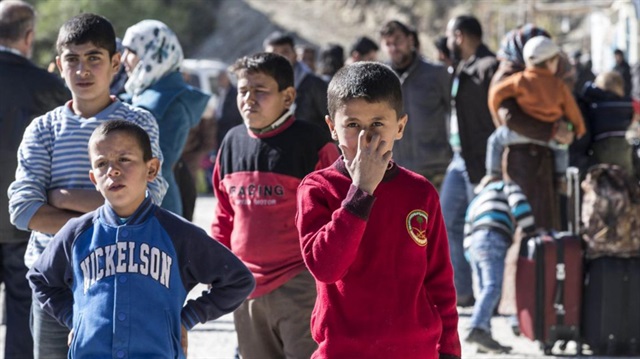
The greatest catastrophe for Turkmens was the Franco-Turkish Agreement of Ankara, signed in 1921 between France and Turkey where the border lines were drawn without consideration for religious or ethnic element
Syrian Turkmens, among the most severely affected victims of the Syrian Civil War, in the northern Syrian province of Latakia, came to world headlines recently because of Russian airstrikes and Syrian regime attacks. The monthly Derin Tarih (Deep History) has published an article about the history of Syrian Turkmens in the Bayır-Bucak area. Here are some extracts from the article:
Ghaznavids and Bowayhids ruled Iran when the Turkmens, under the leadership of Tughrul and Chaghri Bey, won a magnificent victory against the Gazvavids at the Battle of Dandanaqan in 1040.
The Selcuks took control of Iran in a short time, but they were stopped by the Azerbaijan Turkmens. Turkmens started entering Anatolia through a breach between the Zagros and Black Sea Mountains and defeated the Byzantine military in Pasinler.
Turkmens were flowing to the west like “ants and grasshoppers.” Actually the Selcuks, who were trying to establish a central government in Iran, supported the Turkmens' westward movement as policy, because they were elements of instability and frequently stirred up revolts. Their move forward to the border line helped to expand the country.
Meanwhile, a group who called themselves Navakiyye or Yavgiyee settled in Turkmen Palestinian territory. They seized Ramla near Jerusalem and made it the center of their territory.
Kurlu Bey formed a Turkmen principality in the region. After a short time Ramla was captured by Fatimids and Kurlu Bey died. Atsız Bey recaptured Ramla and rapidly widened the border of his principality. Sur Akka, Kudüs, Trablusşam, Humus, Rafendiye cities and castles went under the rule of Atsiz bey. In 1076 Damascus was captured from Egypt's Fatimids.
Arslan Yabgu's Turkmens and Turghrul Bey's Turkmens, the two halves of the Selcuk Family, were reunited on Syrian soil. But they fell into a deep discord instead of cooperation and started fighting each other. Suleyman Shah killed himself after being defeated by Tutush. Then Northern Syria was dominated by Turkmens for many years. Powerful beys such as Zhiredding Tughtekin and Nureddin Zengi gathered Turkmens and protected their territory. Then Turkmens were the strongest military power of the Mamluk Sultanate.
But the Mongols victory against Khawrezmians at the Battle of Yassıçemen in 1230, the area witnessed many incidents that affected history from the deep. The Mongol invasion of Khwarezmia not only opened a door to the Middle East but forced Turkmens to escape to Azerbaijan and Anatolia.
Syrian Turkmens were merged with the Ottoman Empire during Yavuz Sultan Selim's Egyptian Campaign. They were registered to the Ottoman documents as Aleppo Turkmens, Damascus Turkmens, Salur and Choghun Turkmens.
The most important incidents in Turkmen history that determined their fate were World War I and the Turkish War of Independence. Syria was occupied by the British, then the French.
The greatest catastrophe for Turkmens was the Franco-Turkish Agreement of Ankara, signed in 1921 between France and Turkey where the border lines were drawn without consideration for religious or ethnic elements.
A Turkmen-populated area in Bayır and Bucak was put on the Syria map and today Turkmens living in the area of Latakia, northern Syria, are called Bayır-Bucak Turkmens.
Hello, the comments you share on our site are a valuable resource for other users. Please respect other users and different opinions. Do not use rude, offensive, derogatory, or discriminatory language.
The floor is all yours.








